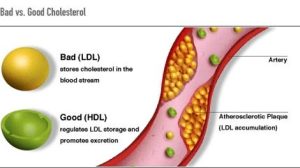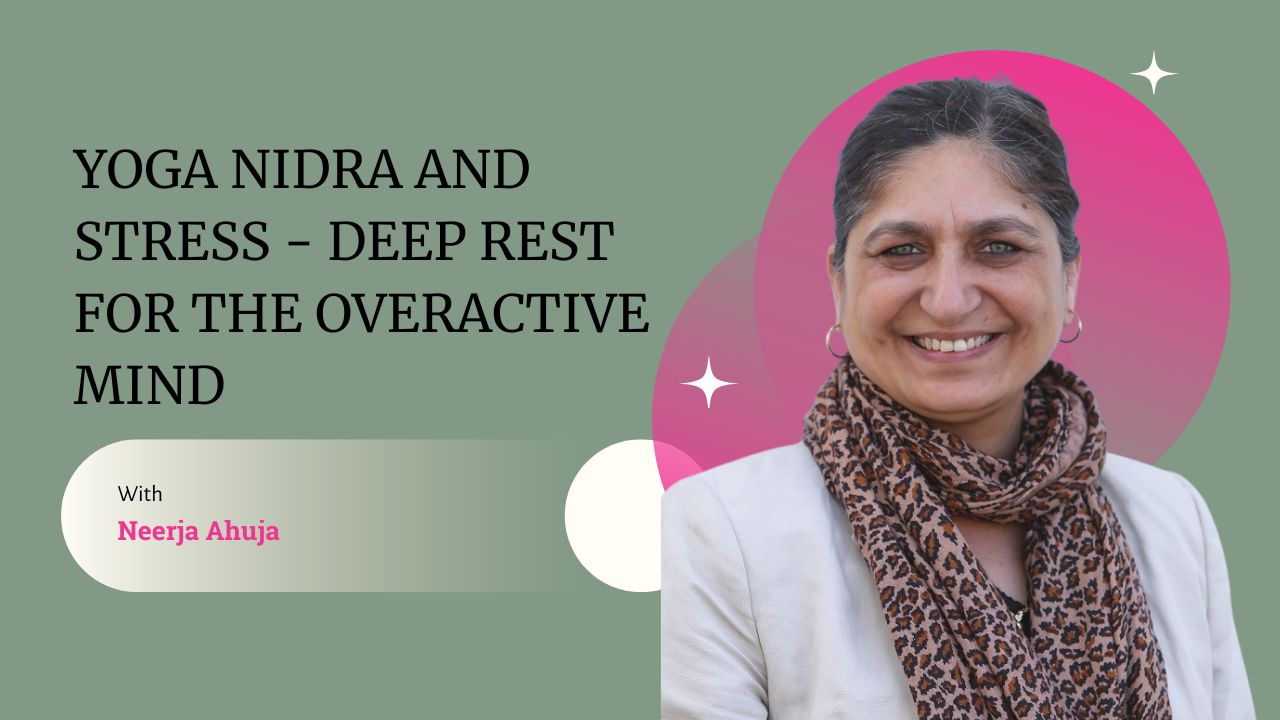What is Cholesterol
Cholesterol is a fatty acid that is a part of circulating lipids in the body. The body needs cholesterol to build cell membranes, vitamin D, hormones, and bile acids and salts. It is obtained both from the diet and produced within the body, mainly in the liver.
Cholesterol in itself is not bad, and is actually essential for the body to function properly. So, in the ayurvedic perspective, the production of cholesterol does not necessarily need to be reduced. However, it needs to be balanced. When the digestion is balanced and healthy, then the body produces the right amount of it, in the right proportion to nourish the body. To understand how to maintain healthy tissues, including lipids, one need to understand that balance is the main principle of Ayurveda. Appropriate lifestyle, diet and daily routine bring balance in all aspects of life – body, mind, emotions and senses. When digestion, assimilation and elimination are balanced, our doshas, and all tissues, including fat tissue and cholesterol will also be balanced.
From the ayurvedic perspective, the body also needs cholesterol for supporting and lubricating the body’s channels, known as srotas. There are millions of micro srotas that carry nutrients to the cells and waste from the cells. Other srotas can be larger, such as the arteries and veins that carry blood to and from the heart.
Lubrication is needed to keep the srotas flexible, elastic and functional. This is done by cholesterol, which our body manufactures from healthy fats.
Cholesterol is not mentioned as such in the ayurvedic texts. The ayurvedic texts talk about meda dhatu (lipid tissue) and explain how to maintain a healthy quantity and quality of this fat or lipid tissue in the body. When meda dhatu is balanced and healthy, that subsequently helps to maintain balanced cholesterol.
The principle factor behind balance in the digestion, and consequently in the body is balanced agni (digestive fire). Digestion is the key for health and disease for the body.
Some numbers
In 2017-18, 6.1% of all Australians (1.5 million people) had high cholesterol, which was a decline from 7.1% in 2014-15. (ABS numbers). The occurrence of high cholesterol increases with age. The proportion of people with high cholesterol doubled from age 45-54 years (6.8%) to 55-64 years (14.1%) and increased to one in five people aged 65 years and over (21.2%).
The body produces most cholesterol naturally, and it is found in some foods. Lipoproteins carry cholesterol in the blood. The two main types that carry cholesterol to and from cells are called low density lipoproteins (LDL-C) and high density lipoproteins (HDL-C).
The lower the density of the lipoproteins the more fats it contains. High density lipoprotein (HDL cholesterol) is called the ‘good cholesterol’ because it helps to keep cholesterol from building up in the arteries. Low density lipoprotein (LDL cholesterol) is called the ‘bad cholesterol’ because it is the main source of cholesterol build-up and blockage in the arteries.
Total cholesterol is a reading of the good and bad cholesterol. Triglycerides are another form of fat in the blood that can also raise the risk of heart disease. High triglycerides are often associated with low HDL cholesterol increasing risk, even though total cholesterol levels in the blood appear normal. When there is too much LDL-cholesterol in the blood, it builds up in the walls of the arteries (plaque). Over time, this build up causes ‘hardening of the arteries’. (information from heart foundation website)
Hypercholesterolemia is one of the leading contributors to coronary heart disease, the number one cause of death of Americans. Globally hypercholesterolemia is estimated to cause 56% of ischemia heart diseases and about 4.4 million deaths per year.
Concept of Cholesterol in Ayurveda
As written earlier, Ayurveda emphasizes the importance of metabolic processes in health promotion as well as disease management. “Agni”, literally “fire”, is the term used in Ayurveda for defining collectively all the bodily metabolic actions.
Metabolic processes maintain the normal quantity, quality and function of the Doshas and tissue (Dhatu). When in abnormal states due to various factors relating to body and the mind; metabolites that are not assimilated by the body tissues will be produced. The resulting product of such metabolic action is called Ama (toxins). From the ayurvedic perspective, ama, or toxins in the fat tissue, cause the harmful kind of cholesterol. Ama, the sticky, foul-smelling waste product of improper digestion, can block the channels of the body, eg as of the arteries.
When ama is present for a very long time and is not cleared from the system, it starts to spread throughout the body, it can mix with the dhatus (body tissues) and the malas (waste products). When this ama mixes with the fat tissue, it damages the channels of the body and leads to problems such as high cholesterol, heart disease, stroke and high blood pressure.
Ama is the primary cause of all metabolic disorders in Ayurveda. Once formed it is capable of obstructing the metabolic pathways and causing diseases. Cholesterol is considered as one such product that originates due to metabolic weakening in the GI tract and fat tissue (Meda). There is no precise term for hyperlipidemia in the Ayurvedic classics. This excessively increased circulating lipid is ama in nature, resulting in further complications.
Pathology
The abnormal Meda (fat tissue) formed because of an abnormal state of metabolism circulates in the channels of the body and gets deposited, producing various symptoms. It clogs and blocks the flow of lymph and blood, causing lethargy, excess sleep, excessive perspiration, a foul body odour, loss of libido, weakness, and lack of stamina as some of the symptoms. Ultimately the excess fats gradually involve doshas and tissues in the body and cause conditions like hypercholesterolemia, hypertension, diabetes mellitus, heart problems, joint disorders and obesity.
Ayurvedic Principles for Managing High Cholesterol
The Ayurvedic approach to hypercholesterolemia involves methods to increase the digestive fire to digest the ama, regulating assimilation and elimination and controlling the causative factors. Many individual herbs and combinations of herbs are used in Ayurveda for the management of meda dhatu excess (increased lipids), ama and metabolic disorder.
For reduction of cholesterol LDL and increase in HDL, we need strategies for
- Reducing the contributing factors
- Increase metabolic activity
- Normalize assimilation and elimination aspects of digestion process
The strength of the digestive fire is needed for the tissues to be formed properly, including the fat tissue. When the production of meda dhatu is disturbed, the quantity (amount and proportion) and quality (contents) of meda dhatu are also disturbed.
If the liver becomes overloaded with toxins, due to certain mental, physical and environmental factors, its functioning can become compromised. When this happens, it disturbs the digestive fire (agni).
This results in imbalance in meda dhatu.

How Liver is involved
When meda dhatu mixes with ama, it changes the quality of fat tissue. This also changes and the quality of cholesterol, making it unhealthy. This mix of ama with meda dhatu or fat tissue is the main way how we create imbalanced cholesterol. And it is the liver that is responsible for qualitative digestion, i.e. the quality, or purity, of the fat tissue and also the quality of the cholesterol that is being produced.
Main causes of imbalanced digestion?
Imbalance in digestion can come from
- mental,
- physical and
- environmental issues.
Mental causes include too much mental activity and emotional factors such as anger, worries, sorrow, and greed.
Physical causes include eating too much, eating too little, and eating “wrong” food, eating before the previous meal is digested, eating at irregular times of day, eating when suffering from indigestion, constipation, suppressing natural urges, and emaciation.
Environmental causes include eating the wrong foods for the season, as well as eating foods polluted with pesticides and other toxins.
What herbs are used for reducing high cholesterol?
Some ayurvedic herbs used for managing cholesterol and to produce healthier fat tissue and balance cholesterol production are Bhumi amalaki, Guduchi, Indian Sarsaparilla, and Manjistha. Each of these helps with bile secretion and also purifies blood and muscle tissue, purifying the building blocks for healthy fat tissue.
Some other ones that are useful are triphala, trikatu, guggul, turmeric and shilajit.
We make detox tea that is also used by us.
Many of these traditionally known herbs have been examined in modern research studies. In a double-blind study published in Science, Guggul was shown to reduce cholesterol as much as cholesterol-lowering drugs, but without the harmful side effects. Turmeric was found to lower triglycerides and serum cholesterol. Bhumi amalaki significantly lowered serum lipid levels and protected the liver from toxins. Zinc was found to reduce atherosclerosis.
Diet and lifestyle tips for lowering cholesterol
The general guideline is to follow a light Kapha-pacifying diet, because those foods will help increase fat metabolism without creating much dryness and brittleness in the body. A Kapha-pacifying diet is typically having bitter, astringent and pungent foods. And avoiding sweet, sour and salty foods.
- Avoid cheese, fatty food, and processed foods.
- Reduce sweets, cold foods and drinks in your diet.
- Include more millets, quinoa, oatmeal, apples, grapefruit, and almonds to reduce cholesterol.
Some home remedies that are said to be effective:
- Mix one clove fresh garlic, finely chopped, half teaspoon of grated ginger and half teaspoon lemon juice; eat this before each meal.
- Take one teaspoon cinnamon and one-fourth teaspoon of the herbal mixture trikatu. Add one cup hot water. Add one teaspoon honey if you like, before drinking. Take it one to two times a day.
- Take half teaspoon trikatu mixed with one teaspoon honey, twice a day, before meal. It is good for burning ama (toxins) and excess kapha, helping regulate cholesterol.
- Drink one cup of hot water with one teaspoon lime juice or 10 drops of apple cider vinegar mixed with honey. This will help to ‘scrape’ off the fat from your system and reduce cholesterol levels.
(From the book ‘The Complete Book of Ayurvedic Home Remedies’)
Lifestyle tips
- It is good to follow a Kapha-pacifying routine.
- This includes exercising every day. Exercise balances the agni, for metabolizing fat and creating healthy cholesterol.
- Yoga asanas and surya namaskar (sun salutations) as part of regular routine.
- To keep cholesterol in balance, do some kind of aerobic exercise in addition to yoga and sun salutes.
- Pranayama is also recommended, as helps clean the srotas, or channels.
- The Kapha-pacifying routine discourages sleeping during the day, as this causes the metabolism to slow down.
- Try to eat your largest meal at lunchtime, when your digestion is strong.
- Practice meditation. It reduces stress and improves mental clarity. This creates and maintains the will, and makes it easier to follow a healthy diet and lifestyle choices during the day.




